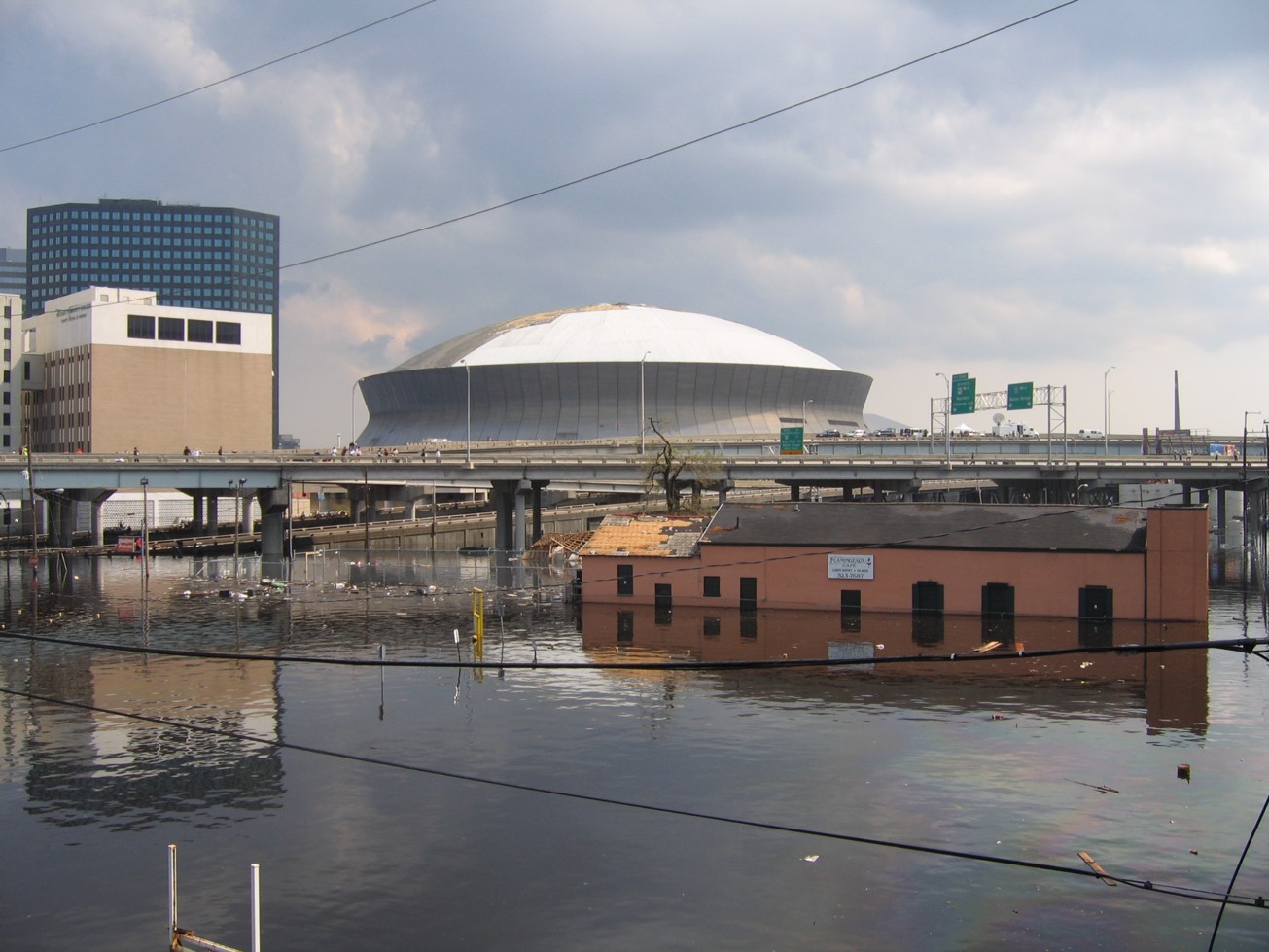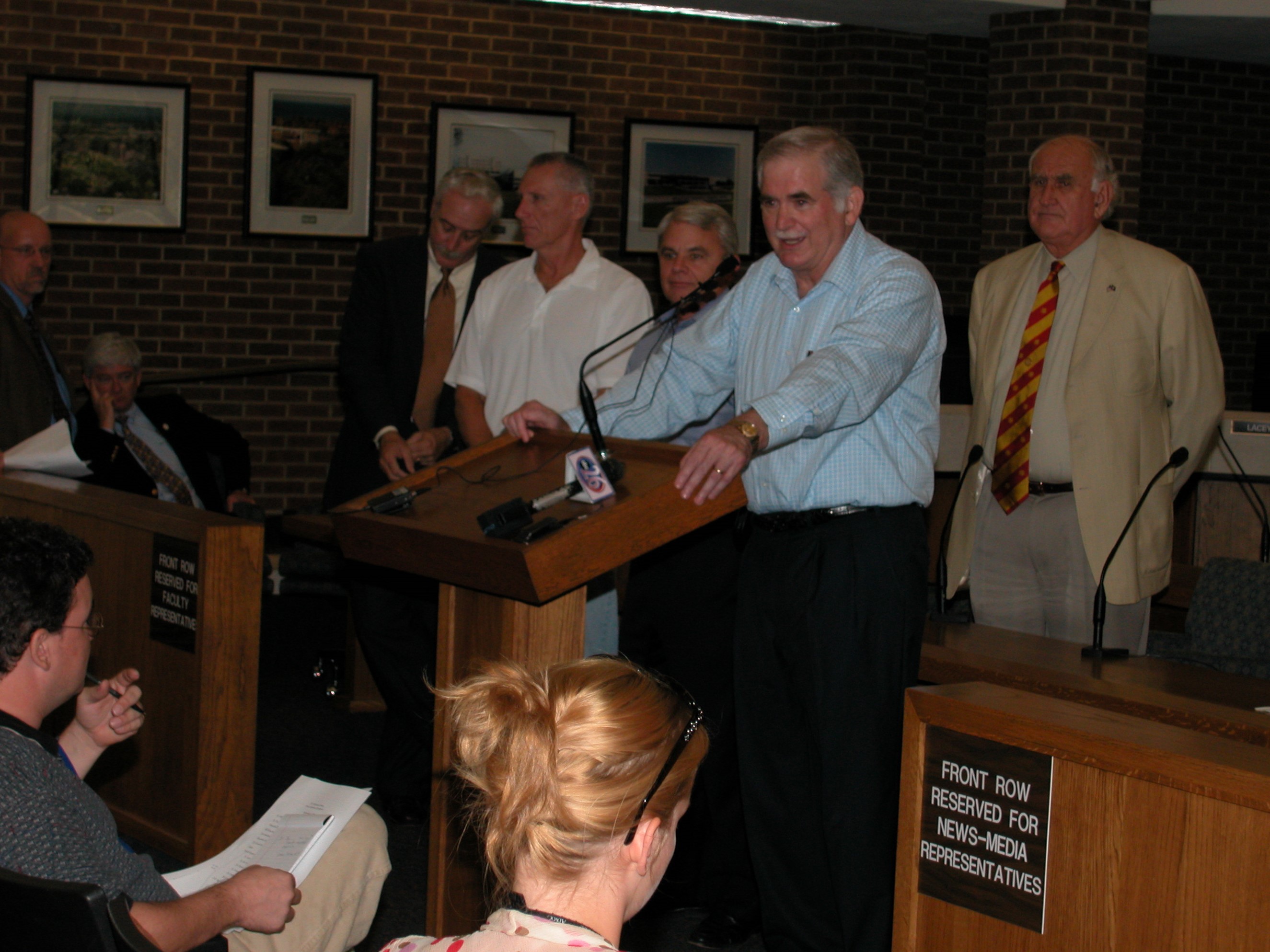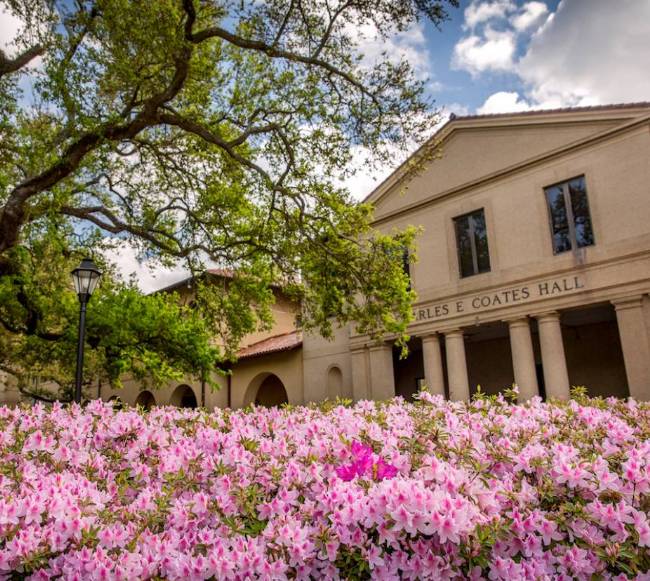How LSU Health New Orleans Restored Education, Research & Care After Katrina’s Coastal Devastation
August 15, 2025

View of the Superdome from the LSU Health campus in downtown New Orleans in the aftermath of Katrina.
In 2005, as Hurricane Katrina bore down on the Gulf Coast, there were 2,279 students enrolled in LSU Health New Orleans’ six health professional schools, 1,271 faculty members, 3,809 staff members, and 700 residents and fellows.
The institution was closed on Aug. 27, 2005, with the goal of evacuating faculty, staff, and students. The next day, on Aug. 28, New Orleans Mayor Ray Nagin announced a historic mandatory evacuation of the city.
When Katrina made landfall on Aug. 29, the impact was devastating for LSU Health New Orleans. Due to storm surge and rising water from multiple levee breaches, New Orleans held standing water of depths up to 20 feet. The campus took on six feet of water on the streets and four feet inside campus buildings.









LSU Health New Orleans Response

LSUHSC Chancellor John Rock addresses Baton Rouge news media in press conference.
LSU Health leadership activated teams to immediately respond by establishing an operations base at the LSU System building in Baton Rouge, creating an emergency website, arranging temporary housing, organizing a temporary campus in Baton Rouge, and working to care for patients and evacuees.
LSU Health also set up an Emergency Information Application, which in 20 days amassed a database of 7,000 registrants. Additionally, a healthcare professionals volunteer database contained nearly 500 names, and a housing registration database had nearly 1,500 registrants.
Meanwhile, in New Orleans, LSU Health faculty remained at Charity and University Hospitals, caring for patients until they were evacuated on Sept. 3—after five days without power or food and in grim conditions for both patients and healthcare workers.
LSU Health recruited physicians, nurses, allied health professionals, and student volunteers to staff the temporary medical operations staging areas on the LSU campus, at a temporary field hospital, and increased services at Earl K. Long Hospital in Baton Rouge and University Hospital in New Orleans.
LSU Health New Orleans volunteers helped treat more than 28,000 patients in the Temporary Medical Operations Staging Areas at LSU, as well as standing up a Field Hospital in the K-Mart Warehouse which cared for about 300 patients and 500 evacuees. Volunteers also participated in the Shelter Health Coalition through the Louisiana Department of Health, administering immunizations like the flu shot to those living in close quarters.
LSU Health New Orleans helped with the medical response immediately following Hurricane Katrina included serving in the lead role in the Greater New Orleans Health Care Task Force, providing medical direction for the USNS Hospital Ship Comfort, providing emergency care in a Combat Support Hospital, and working with the City of New Orleans to rebuild healthcare infrastructure.
The LSUHSC School of Public Health was asked by the U.S. Public Health Service to assist in all aspects of the recovery effort, and the LSU Healthcare Network established Faculty Practice Clinics for displaced patients in Baton Rouge.
On Sept. 2, 2005, 180 faculty, students, and administrators were evacuated from LSU Health New Orleans. While personnel made it out of the storm safely, the damage to the LSU Health New Orleans Downtown and Dental campuses was vast due to water and wind damage.
At this point, the institution’s interim goals were clear and included:
- maintaining the Fall 2005 schedule for LSU Health’s six schools,
- retaining faculty and staff, creating steps to house active research programs,
- identifying and creating a site to reestablish faculty practice,
- rescuing essential research materials and securing the facility,
- graduating the December Nursing School class,
- continuing admissions operations for all schools,
- and ensuring uninterrupted access to LSU Health Communications.
Education and Research Continue
On Sept. 26, 2005, less than two months after the storm ravaged New Orleans, LSU Health classes began in Baton Rouge. Classes were set up across Baton Rouge at Pennington Biomedical, Citi Place Movie Theater, and at the LSU South campus.
Upper-class students and residents were placed in clinical rotations throughout the state and country. Trailers and a Baltic Finnjet ferry docked in the Mississippi River served as 1,000 housing units for faculty and students.
At the start of the Fall 2005 semester, 2,279 students matriculated at LSU Health New Orleans’ six schools, and in the immediate aftermath of the storm, LSU Health retained over 90% of students. All students graduated on time, and residents completed their training on time by moving to partner institutions across Louisiana.
Back to New Orleans
The Clinical Sciences Research Building was the first to open after the storm in January 2006, and as buildings were restored, they reopened. Every building on LSU Health’s Downtown and Dental campus was damaged by wind, flood, or both, and by August 2007, each had returned to use.
Every step of the immediate recovery process happened because of LSU Health New Orleans’ dedicated leadership team, faculty, and staff, who worked tirelessly in their respective fields to ensure students had a place to learn, to preserve and continue research projects, and to not only restore but also revitalize the LSU Health New Orleans campuses.
LSUHSC Hurricane Katrina Archive
To commemorate the 20th anniversary of Hurricane Katrina, the Libraries are collecting materials relating to Katrina and the LSUHSC campus in New Orleans.
This growing archive will include oral histories collected by the library for the 20th anniversary of the storm, photos and videos (some available digitally), bibliographies, and other materials from the years after the hurricane.
Turning Tragedy into Impact
Explore LSU’s role in response, recovery, resilience, and research following Hurricane Katrina.


